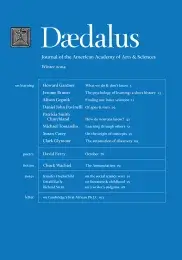Learning through others
Learning is a biological adaptation. The majority of organisms on Earth learn little or nothing during their individual lifetimes. On the other hand, many mammals are born in a highly immature state and so they must individually learn things crucial for their survival. In order to find food reliably, youngsters of foraging species must learn the spatial layouts of their local environments. In order to distinguish friends from enemies, youngsters of social species must learn to recognize the individuals who make up their social groups.
For several decades, behaviorists attempted to find the laws of learning that applied equally to all species, for any and all tasks, and that did not involve to any significant degree processes of cognition. But the modern view that learning assumes diverse forms in different species and behavioral domains, and operates in concert with cognitive processes that may be specific to particular species or domains, has for the most part suspended that search.
For social species such as humans and other mammals, an especially important form of learning is social learning. Observing the activities of others and learning about the world from or through them enables individuals to acquire information with less effort and risk than if they were forced to learn on their own. For instance, many species of rats learn which foods to eat and which to avoid by observing what other rats eat and then seeing what happens to them subsequently–clearly a safer strategy than always trying out new foods for oneself.1
Despite an overall similarity in the function of learning in the lives of different species of mammals, social learning, like individual learning, comes in many different forms. In our empirical work over the past fifteen years, we have investigated forms of social learning that . . .
